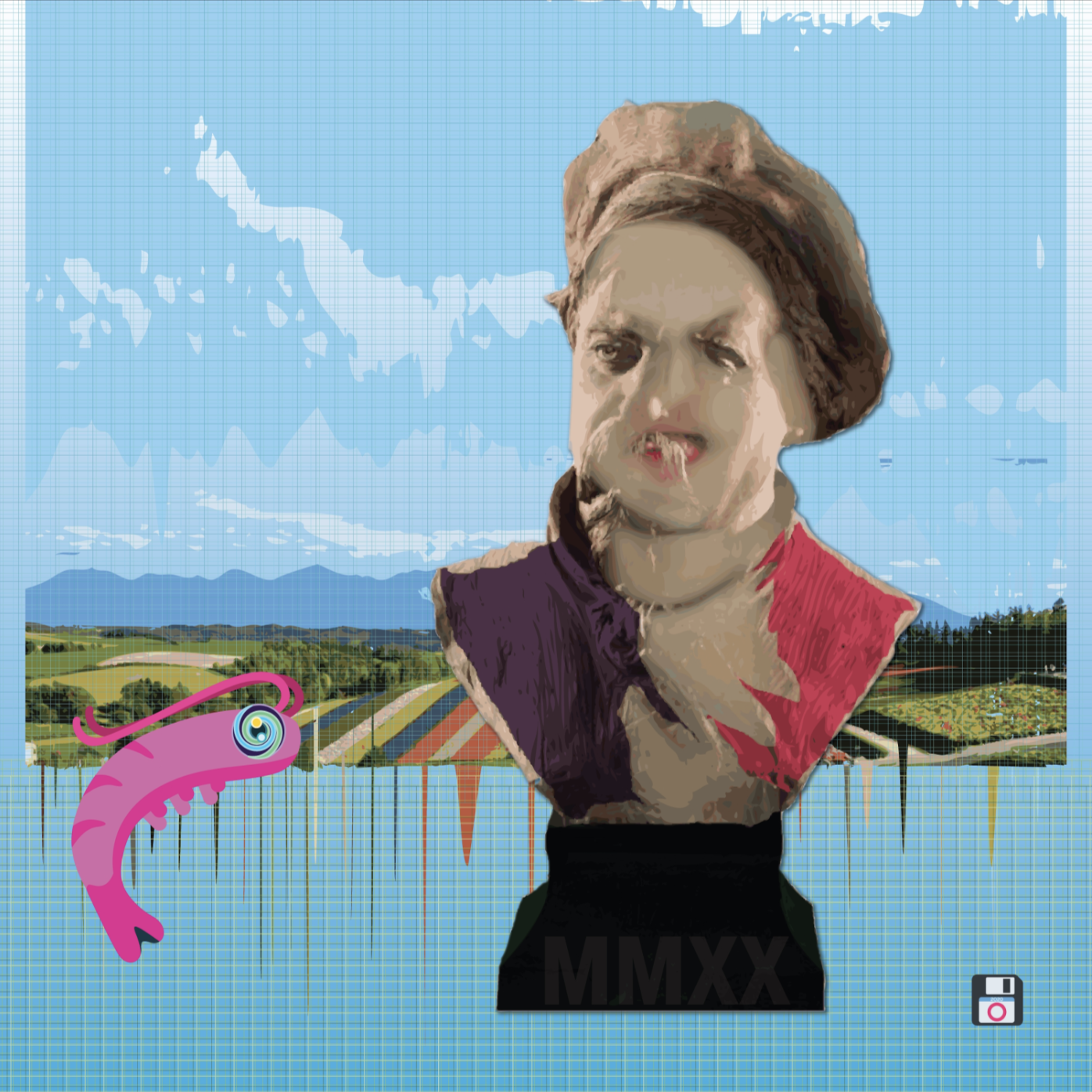One fantastic Frenchman who emanates the purest crypto energy from his artistic countryside. This is an AI sculpture of the one & only ᗩᒪᎧTTᗩ ᗰᎧᑎEY
In the realm of AI-generated art and the enigmatic world of NFTs, the emergence of Mask of the Man With the Golden Nose stands as some of my intriguing testament to the intersection of technology, creativity, and the ever-elusive concept of ownership. As we delve into this digital canvas reminiscent of Michel Foucault’s analytical discourse, we unravel a narrative woven with the threads of memory, friendship, and the paradoxical nature of artist collectors.

The Birth of ‘Mask of the Man With the Golden Nose’
In the atelier obxium of AI creativity, “Mask of the Man With the Golden Nose” materialized, as a manifestation of algorithms that, in a Foucauldian sense, reconfigured the boundaries of art and the artist. This work, its origin rooted in the depths of now primitive DREAM style GANs and emoji, emerged as a tribute to our dear departed friend, Alotta Money.
Alotta’s memory is a testament to humor, extravagance, and the relentless pursuit of life’s pleasures—a character exuding the very essence of excess that Foucault might have found fascinating in his exploration of desire and pleasure.
The Conundrum of Ownership
It is in the hands of Robness Cyberpop that this ethereal creation has found its home. Robness, an enigmatic figure in the digital realm of artistic waste management, symbolizes the new age of artist-collector—individuals whose identity often remains shrouded in the anonymity of the online world. In Foucault’s terms, the ownership of “The Man With The Golden Nose” raises questions about power dynamics and the shifting sands of control. Robness’ possession of this AI-generated masterpiece continues to challenge the conventional notions of art ownership.
In the Foucauldian context, Robness Cyberpop’s claim to “The Man With The Golden Nose” reflects the notion of “biopower” and “technopower” converging in the digital era. As the lines blur between creator and collector, this NFT epitomizes the evolving landscape of artistic production, raising questions about who holds authority over art in an age where algorithms are the creators and collectors are the gatekeepers.
A Tribute to Alotta Money
The name “The Man With The Golden Nose” itself evokes Alotta’s extravagant spirit. Alotta, a connoisseur of life’s pleasures, lived on the fringes of society’s expectations, much like the spirit of transgression Foucault so keenly explored in his works. In Alotta’s memory, this AI-generated masterpiece not only captures the essence of excess but also serves as a digital memento to a friend who reveled in the extravagance of existence.
In Conclusion
“The Man With The Golden Nose” exists as a captivating exemplar of the complexities that AI art and NFTs introduce into the discourse of art and ownership. In the spirit of Michel Foucault, we must view this creation not merely as an artwork but as a reflection of the evolving relationships between art, technology, and society.
Robness Cyberpop’s ownership of this NFT exemplifies the fluidity of power and control in our digitized world, where the lines between creation, curation, and possession are no longer clear-cut.
In the ever-expanding universe of AI-generated art and NFTs, “Mask of the Man With the Golden Nose” invites us to ponder the paradoxes of creation & ownership, the transgression of boundaries, and the enduring legacy of a friend whose extravagant spirit lives on through this digital work.
As we navigate this brave new world of art and technology, we find that the golden nose, like Alotta Money himself, is an emblem of indulgence, exploration, and the enigmatic allure of the digital age.
write an article about my first ever AI art NFT 'Mask of the Man With the Golden Nose', about our late friend Alotta Money and how it was collected and is owned by Robness Cyberpop and that is ok I guess, in the style of Michel Foucault
